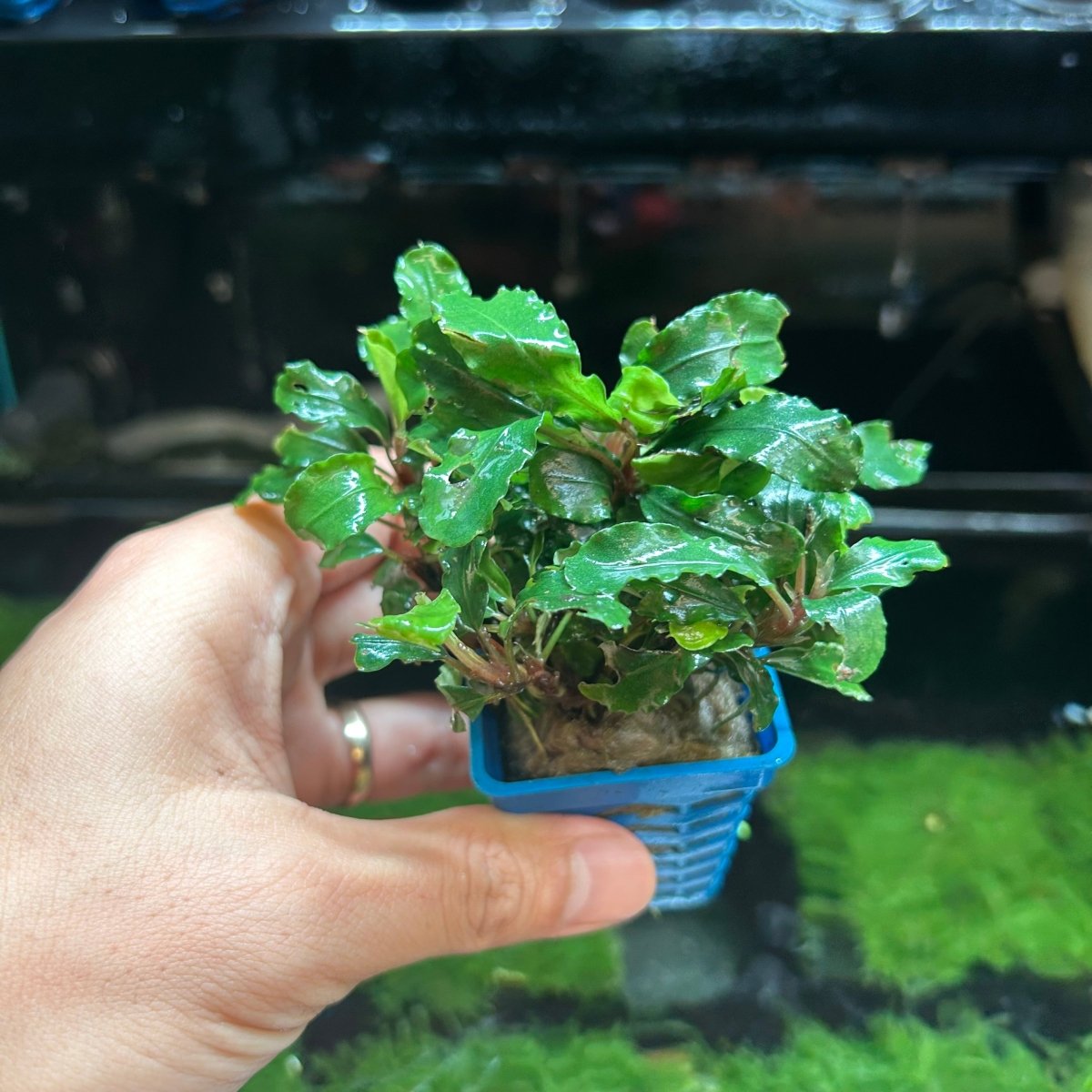Bucephalandra Aurora - Pot
Envío:
Prioridad de USPS : los peces vivos se enviarán solo los lunes y martes.
UPS : Los envíos al segundo día y al día siguiente se realizarán de lunes a miércoles.
Reembolso y DOA:
DOA (muerte al llegar) : reembolso total del costo del pez o reemplazo por otro pez. Envíe 2 fotos claras de peces o camarones DOA en la bolsa en la que llegaron los peces y una foto del pez claro al salir de la bolsa dentro de las 2 horas posteriores a la entrega.
Envío con demora por parte del transportista: si el tiempo total de envío es superior a 3 días, la garantía de devolución del dinero se anulará. Para obtener más información, consulte https://justfishything.com/policies/refund-policy
Aclimatación:
Coincidencia de temperatura : asegúrese de que el agua en la bolsa o recipiente en el que vino su Betta esté a la misma temperatura que el agua del tanque.
Deje flotar la bolsa : Deje flotar la bolsa sellada en el tanque durante aproximadamente 15 a 20 minutos para permitir que el agua del interior se ajuste a la temperatura del tanque.
Mezcla de agua : agregue gradualmente pequeñas cantidades de agua del tanque a la bolsa durante los próximos 15 a 20 minutos para ayudar al Betta a adaptarse a los nuevos parámetros del agua.
Liberación : saque con cuidado al pez Betta de la bolsa y suéltelo en el tanque. Evite agregar el agua de la bolsa al tanque para evitar la propagación de enfermedades.
FOTOS: Intentamos tomar buenas fotografías para mostrar el mejor aspecto de los peces, pero nuestras fotografías no están editadas.
Bucephalandra ‘Aurora’ is a variety of the genus Bucephalandra, native to Borneo. It features roundish leaves (about 1 cm to ~2.5 cm in typical form) and is described as easy care. Buce Plant+2Aquarium Co-Op+2
It can be grown either submerged or emersed (partially above water) and is suitable for aquascapes where you attach plants to rock or driftwood. Buce Plant+1
Growth rate is slow (typical for many Buce varieties) so patience is needed. Buce Plant+1
2. Ideal Conditions & Parameters
| Parameter | Recommended Range / Notes |
|---|---|
| pH | ~6.0 to ~8.0 – good flexibility. Buce Plant+1 |
| Temperature | ~21 °C to ~28 °C (≈70 °F – 82 °F) – normal tropical range. Aquarium Co-Op+1 |
| Light | Low to medium is sufficient; high light can be OK but increases risk of algae and stress. The 2Hr Aquarist+1 |
| CO₂ / Fertiliser | CO₂ is not required, but adding it can boost growth or colour. Liquid fertiliser beneficial. Buce Plant+1 |
| Placement | Best when attached to hardscape (rocks, driftwood); avoid burying the rhizome. Aquarium Co-Op+1 |
Specific for ‘Aurora’:
-
Leaves are described as “round leaves … generally green or lime green” in the listing. Buce Plant
-
Can be grown submerged or emersed. Very slow growth. Buce Plant
3. Planting & Installation Tips
-
As with typical Buce, do not bury the rhizome into substrate — doing so can cause rot. Instead attach the plant to rock or driftwood using thread, fishing line, or aquarium-safe glue. Aquarium Co-Op+1
-
If you choose to plant onto substrate, try to keep the rhizome exposed above the substrate surface and let roots grow into the substrate. Aquarium Co-Op
-
Choose an area with moderate water flow — since these plants come from fast‐moving streams, they prefer some circulation (but not overly destructive flow) to reduce debris/film buildup. The 2Hr Aquarist
-
Because ‘Aurora’ grows slowly, allocate space and avoid crowding. Over time it will spread but slowly.
4. Maintenance & Care
-
Keep water quality stable — Bucephalandra tends to respond poorly to big swings in water chemistry or poor water quality. The 2Hr Aquarist
-
Regular water changes and removing debris/film on leaves helps avoid algae issues (since slow growth means less leaf replacement).
-
Fertiliser: Because the plant does not rely heavily on substrate nutrients, a good liquid fertiliser (with micronutrients) once a week (or per your dosing regime) will help keep leaves healthy. Root tabs not generally necessary unless planted deep. Splashy Fish
-
Light: Keep at low–medium intensity. If you see signs of algae on leaves, consider reducing light intensity or duration.
-
Cleaning: Leaves may collect algae or biofilm; gently wiping the surface or using algae eaters helps.
-
Observe: Since growth is slow, new leaves will appear gradually — don’t expect rapid filling in.
Have a question?




Bucephalandra Aurora - Pot





